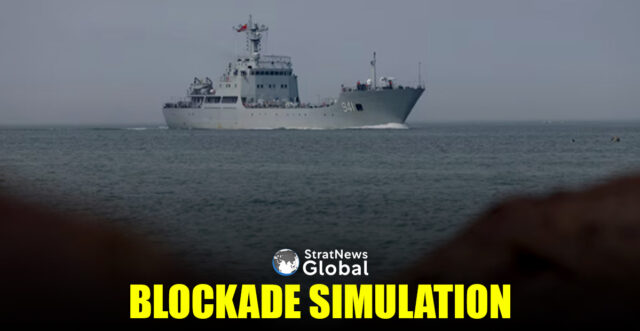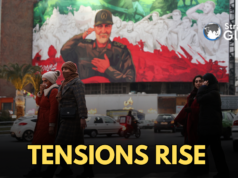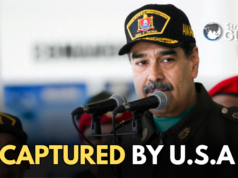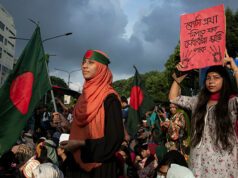An exercise depicted a tense scenario: a simulated Chinese military blockade of Taiwan by air and sea, leaving Southeast Asian nations scrambling to plan evacuations for up to 1 million Taiwanese citizens trapped on the island.
Over two days in April at a Singapore hotel, some 40 participants and observers in the war game, including serving and retired Asia-Pacific officials and military officers, as well as security scholars, simulated their responses to the unfolding crisis, according to four people familiar with the discussions.
Hours ticked by as some players weighed unified action through the Association of Southeast Asian Nations, while others reached out to the mock U.S., Chinese and Japanese delegates to negotiate special air and sea corridors to extract foreign nationals. Eventually, the people said, a stark conclusion emerged: The Southeast Asian states needed a Singaporean airlift to have a chance of evacuating their people.
“Nothing was moving until the Singaporeans stepped in at the 11th hour,” said one participant in the event at the Jen Singapore Tanglin hotel. “They had found a way of getting their own people out, and offered to get others out, too.”
Reflecting its discreet and decades-old security presence inside Taiwan, where its forces train, Singapore was able to leverage access to airfields and aircraft, the person said. But the exercise ended before any detailed discussion of how Singapore had reached a deal with China to secure an evacuation route through the blockade, or how precisely it would work, three of the people told Reuters.
Rising Asia-Pacific Tensions
The previously unreported exercise comes amid an escalating battle between the U.S. and China for dominance in the Asia-Pacific region. It offers a rare window into contingency planning over Taiwan, which some Asian and Western military attaches and security analysts say is becoming increasingly necessary because an assault on the island by Beijing could draw in the U.S. and imperil other countries.
While the scenario didn’t reflect official policies, participants playing the roles of foreign and defence ministers worked from the known positions of at least nine governments depicted in the simulation, said the four people, who, like some others, spoke on the condition of anonymity to discuss a sensitive matter. Besides Singapore, China, Taiwan and the U.S., the rest included Indonesia, Vietnam and the Philippines, they said.
Southeast Asians account for about 94% of the almost 1 million foreign nationals resident in Taiwan, according to Taiwan’s National Immigration Agency. Indonesians, Vietnamese and Filipinos make up the vast majority of those foreigners, with comparatively small numbers of Japanese and Americans.
Singapore’s defence ministry said it wasn’t involved in the “workshop” and none of its officials attended in any capacity. Neither the defence nor the foreign ministries addressed Reuters’ questions about Singapore’s military presence in Taiwan and planning for Taiwan conflict scenarios, including evacuations.
China’s foreign ministry said it had “always resolutely opposed countries with whom it has diplomatic relations having any form of official relations with the Taiwan region, including military dialogue and cooperation,” adding that it wasn’t aware of the circumstances of the exercise.
The London-based International Institute for Strategic Studies (IISS), which organised the exercise, told Reuters in a statement that participants had attended in their private capacities, and that it could not comment on “discussions, attendees, or any other elements.”
Taiwan’s defence ministry and the ASEAN Secretariat in Jakarta didn’t respond to questions.
A Pentagon official said they were not aware of any official participation in the event by the U.S. Defence Department. “We routinely engage with allies and partners to ensure readiness for a range of contingencies, but it would be inappropriate to discuss operational planning or hypothetical evacuation scenarios,” the official said.
‘Imminent’ Threat To Taiwan
Weeks after the exercise, U.S. Defence Secretary Pete Hegseth told a security conference in Singapore that the threat of China using force to take Taiwan was “imminent” amid intensifying air and naval operations around the island by the Chinese military, the People’s Liberation Army.
Chinese officials have said Hegseth and other Trump administration officials are playing up “the so-called China threat”, with the Chinese embassy in Singapore saying his speech was “steeped in provocations and instigation”.
China claims Taiwan as its territory and has never renounced the use of force to seize it. Taiwan’s President Lai Ching-te and his government strongly object to China’s sovereignty claims, saying it is up to the island’s people to decide their future.
Drew Thompson, a Singapore-based security scholar, said it was vital for Southeast Asian countries to move beyond war games and contingency discussions to build meaningful, unofficial ties with Taiwan, particularly its military. These countries have diplomatic ties with Beijing and don’t officially recognise Taipei.
“The big takeaway here is that a plan is one thing, but you need the access and the relationships to put it into play,” said Thompson, of the S. Rajaratnam School of International Studies, who wasn’t involved in the exercise.
“Singapore has long had these ties, the Philippines is building them, but it remains an open question whether the other countries in Southeast Asia have the unofficial networks in place to meaningfully engage with Taiwan in a conflict.”
The Philippines’ foreign ministry told Reuters the government has contingency plans for a Taiwan emergency, without offering specifics. It added that Manila has “legitimate interest in Taiwan due to geographic proximity and the presence of Filipino nationals there”.
The foreign ministries of Indonesia and Vietnam didn’t respond to requests for comment. Japan’s defence ministry declined to comment.
(With inputs from Reuters)





